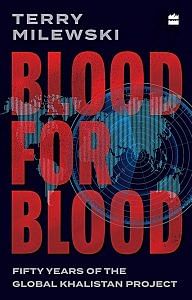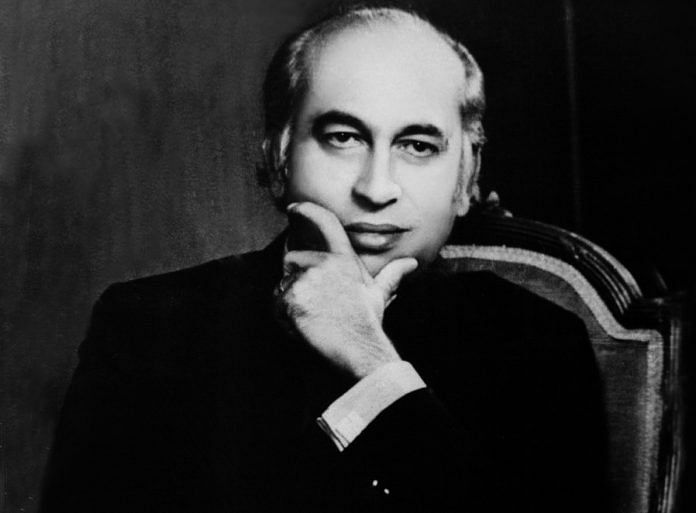In the seven decades since Partition, Sikhs have spread out across the globe and can be found in Frankfurt, Reggio Emilia, and Yuba City, California. Large numbers have settled in the West London district of Southall, in Brampton, Ontario and in Surrey, British Columbia.
Canada, with about 500,000 Sikhs, and the United Kingdom, with about 430,000, have the largest share of the Sikh diaspora. It is there that an energetic minority still hopes to end what they call India’s ‘illegal occupation’ of Punjab. Not Pakistan’s occupation of the other half, mind you – just India’s.
There’s a reason why Pakistan’s ‘occupation’ gets a free pass: living in the West is a problem if you’re trying to run an insurrection in Punjab. No western country offers the opportunity to slip across the border into India, and none offers clandestine government support for an armed revolt.
For that, there’s no substitute. You need Pakistan. Pakistan’s interest in making trouble for India was foundational, but the Khalistan movement didn’t offer much to work with until fanned into life by its patriarch, Dr Jagjit Singh Chauhan, a dentist and politician who left Punjab for London and declared himself the President of Khalistan in 1971.
The geopolitics of the time gave Chauhan some natural allies. His plan suited both American and Pakistani interests in punishing Indira Gandhi’s government for its anti-American tilt towards Moscow. The Americans and the Pakistanis both wanted the Russians out of Afghanistan, and that made American allies out of the Pakistani Taliban.
Also Read: Pakistan finds love for Sikhs. Now cheering the Khalistan dream after failed Kashmir project
Chauhan had barely begun his quest when he was warmly received in Pakistan by its military dictator, Gen. Yahya Khan. Then he went to New York and on 12 October 1971, took out an advertisement in The New York Times proclaiming the birth of Khalistan.
‘We are going to wait no more,’ the ad declared. ‘Today we are launching the final crusade …We are a nation in our own right.’
Indian intelligence agents grumbled that the ad was actually paid for by the Pakistani Embassy in Washington. True or not, Pakistan’s interest in Khalistan was turbocharged two months later by its humiliating defeat in the December 1971 war with India. The result was that East Pakistan was torn off to become an independent nation – Bangladesh – with the added ignominy that 93,000 Pakistani soldiers surrendered to the Indian Army.
The Pakistani military was disgraced, Gen. Yahya Khan lost his job and Zulfikar Ali Bhutto took over as president. Even so, Bhutto inherited the Khalistan project, spiced with the prospect of revenge.
Watching this was the writer and broadcaster Tarek Fatah, a Muslim from Pakistan who now lives in Canada. As a young journalist in 1973, Fatah heard Bhutto pledge at an off-the-record briefing to break off a piece of India – Khalistan – to avenge the shame of 1971. ‘Pakistan will also have a Bangladesh, carved out of India,’ Fatah quotes Bhutto as saying, ‘except it will be on Pakistan’s border.’
That last phrase was significant because revenge was not all that the Pakistanis wanted. There were strategic interests, too.
Husain Haqqani, a former Pakistani ambassador to Washington, says that ‘bleeding’ India was the immediate motive, but that Pakistan also wanted to create a strategic ‘buffer’ between India and Pakistan. Such a buffer state, Haqqani says, would ‘end India’s land access to Kashmir’ – and Kashmir was and is a perennial focus of Pakistani policy.
So what is clear is that Pakistan wasn’t driven by a desire to create a paradise for the Sikhs. This was about revenge and geography. As the Khalistan movement grew, a mostly-unclassified 1987 assessment by the Central Intelligence Agency (CIA) laid out what a disaster any loss of Punjab would be for India’s defence strategy.
Also Read: Imran Khan’s fantasy to revive Khalistan isn’t happening because Sikhs aren’t gullible
Haqqani adds that India is strong enough to maintain its grip on Punjab, meaning that, realistically, Pakistan can only hope to ‘bleed’ India, leaving its grander, strategic goals out of reach. But helping Khalistanis to make trouble in India was a lot cheaper and safer than conventional warfare – and it wasn’t empty talk.
In fact, according to Jagjit Chauhan, Bhutto offered him Pakistan as a base for his Khalistan campaign. Speaking to India Today in 1993, Chauhan said Bhutto had urged him twenty years earlier to set up shop on holy ground for the Sikhs inside Pakistan, at Nankana Sahib, birthplace of the first Sikh guru, Guru Nanak. Chauhan emphasized that the Pakistani offer was not out of brotherly love for the Sikhs – quite the reverse:
They didn’t care about Khalistan or about the Sikhs. They were cynically exploiting the Sikhs. This was something I’d been told by Pakistanis themselves. … Zulfikar Ali Bhutto, who was rebuilding Pakistan after the 1971 war, invited me to meet him in New York … I remember meeting his delegation in a hotel room. They said, ‘Sardarji, you have the keys to Nankana Sahib. Come there, we’ll help you and make it the capital of Khalistan. Start the movement from here.’ And why shouldn’t he have done it? He wanted revenge for Bangladesh.
 This excerpt from ‘Blood for Blood: 50 years of the Global Khalistan Project’ by Terry Milewski has been published with permission from Harper Collins.
This excerpt from ‘Blood for Blood: 50 years of the Global Khalistan Project’ by Terry Milewski has been published with permission from Harper Collins.



